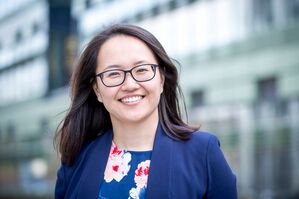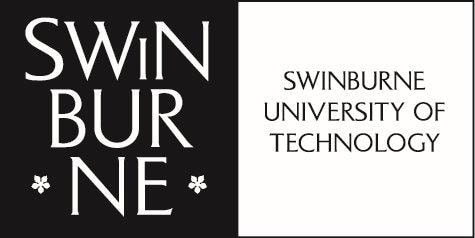 Risk-taking means different things to different people. When a scientist takes a risk with their work, what are they putting on the line? It could be months of effort, their reputation, or the next career step. But with risk, comes reward. When scientists pursue ambitious science there’s no guarantee of success, but they’re still prepared to push the boundaries to advance frontiers more quickly. Jielai Zhang—OzGrav’s newest postdoc working with Chief Investigator Jeff Cooke in the Deeper, Wider, Faster program--has all the traits of a born scientific risk-taker. This is no surprise if you dig into her background and her upbringing: born in Shanghai, China, Jielai moved to Sydney when she was 8-years-old. She completed an undergraduate degree in engineering and science, majoring in maths and physics at the University of Sydney before crossing continents to take a PhD in astrophysics and astronomy at the University of Toronto. Jielai then seized the opportunity to become one of the first Schmidt Science Fellows in 2018, shifting her focus to work on biomedical imaging at IBME at the University of Oxford. Her combination of curiosity and an appetite for taking risks has now taken her to the cusp of her next leap: starting a new role with OzGrav to study how astronomical phenomena changes on timescales of seconds. Jielai’s academic journey so far… I started taking significant risks in my work when I travelled to Canada for my PhD at the University of Toronto in astrophysics and astronomy. During my PhD, I built a new telescope in a small team of 4, the Dragonfly Telephoto Array, using an unproven novel design. The unknown factor was worth the risk and I did not shy away. I wanted to explore faint galaxies that nobody had looked at before and we had to build a new telescope to see it. At the end of my PhD, I become interested in a new field of astronomy called ‘Time Domain Astronomy’. This looks at how the Universe changes on a very fast time scale. The constellation in the sky used for sailing 1,600 years ago is the same today but the sky is also changing on very fast time scales – we just didn’t know about it before. We’re talking days, minutes, seconds or less. The new field of astronomy I now work with requires very fast exposure times which acquire a lot of data, so I had been looking into new techniques, methods and tools from other fields that I could apply to this huge data volume in astronomy that we haven’t had to deal with before. That’s when I came across medical imaging, deep learning and machine learning. I zeroed in on medical imaging as I started to investigate it because of the way it applied a method called ‘Deep Learning’ which I felt was useful to astronomy. I was intrigued to learn more and then I came across the Schmidt Science Fellows program which would allow me to pivot for a whole year into another field rather than learning slowly on the side which is what I thought I may have had to do. The program would allow me to get face to face exposure to people in the field that I wish to learn more about and that’s why I applied. Now, as I enter my new role as an OzGrav postdoctoral research fellow, I am confident knowing that can I approach and get advice from a network of people outside of my field. This is particularly useful when I want to apply deep learning and machine learning to new types of data. This article is an extract of the original feature published on Schmidt Science Fellows.
0 Comments
|
- Home
- About
-
Our People
- Chief Investigators
- Partner Investigators
- Associate Investigators
- Postdocs and Students >
- Professional & Outreach staff
- Governance Advisory Committee
- Scientific Advisory Committee
- Executive Committee
- Equity & Diversity Committee
- Early Career Researcher Committee
- Professional Development Committee
- Research Translation Committee
- OzGrav Alumni
- Research Themes
- Education and Outreach
- Events
- News/Media
- Contact Us
- Home
- About
-
Our People
- Chief Investigators
- Partner Investigators
- Associate Investigators
- Postdocs and Students >
- Professional & Outreach staff
- Governance Advisory Committee
- Scientific Advisory Committee
- Executive Committee
- Equity & Diversity Committee
- Early Career Researcher Committee
- Professional Development Committee
- Research Translation Committee
- OzGrav Alumni
- Research Themes
- Education and Outreach
- Events
- News/Media
- Contact Us









